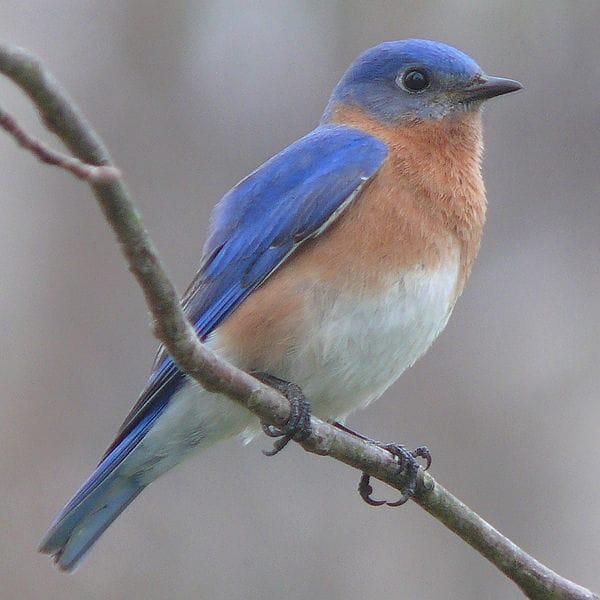As global temperatures rise and climate patterns shift, the avian world is facing an unprecedented challenge: the race to adapt to extreme heat. While many species have displayed remarkable resilience, some birds are struggling to keep pace with the relentless march of warming conditions. In an ecological landscape defined by rapid changes, a growing body of research highlights the plight of these vulnerable birds, revealing the stark realities of their diminishing habitats, altered food sources, and increased competition. This article delves into the complex interplay between rising temperatures and avian survival, shedding light on the species left behind in the struggle to beat the heat—an urgent call to action for conservationists and policymakers alike.
Rising Temperatures Push Migratory Birds to Their Limits
As climate change accelerates, migratory birds are experiencing unprecedented challenges, forcing them to adapt their traditional routes and timings in an effort to avoid soaring temperatures. These shifts can lead to significant disruptions in their breeding and feeding cycles. Studies indicate that many species have already altered their migration patterns, with some flying longer distances in search of cooler habitats. This situation has resulted in a mismatched timing with seasonal food supplies, which can endanger the survival of the young birds and disrupt established ecosystems.
The struggle to adapt isn’t uniform across all bird species. Some are thriving, while others face steep declines. Factors contributing to this disparity include:
- Feeding habits: Birds that rely on specific food sources may find it hard to adapt if their food becomes scarce.
- Breeding grounds: Altered habitats can lead to insufficient nesting opportunities.
- Cold tolerance: Species that cannot withstand high temperatures are more likely to suffer population drops.
Research reveals that as certain birds migrate earlier or later due to temperature spikes, it impacts their breeding success and survival rates. For example, a recent study documented the relationship between increasing temperatures and the timing of migration for various species, illustrating the urgent need for conservation strategies tailored to the unique challenges presented by a changing climate.
Understanding the Risks of Climate Change on Bird Populations
The shifting climate is altering habitats and impacting the migratory patterns of bird species worldwide. Rising temperatures and changing precipitation patterns are leading to a mismatch between the timing of food availability and the breeding schedules of various bird populations. This phenomenon poses a significant threat to survival, as many birds may struggle to find adequate nourishment during critical life stages, such as nesting and fledging. Key drivers of these changes include:
- Altered migration routes: Birds are arriving earlier or later than usual at their breeding grounds, which can affect reproductive success.
- Loss of habitat: Wetlands, forests, and grasslands are being transformed or destroyed, reducing nesting sites and food sources.
- Increased competition: As species migrate or expand their ranges in search of suitable conditions, they may encounter new competitors for resources.
Furthermore, certain species are experiencing population declines more dramatically than others, exacerbated by their inability to adapt quickly to these environmental stressors. The plight of birds such as the American woodcock or the common loon’s illustrates the broader impacts of climate change. To better understand these risks, researchers have compiled data highlighting the correlation between rising temperatures and species vulnerability:
| Bird Species | Population Trend | Key Threats |
|---|---|---|
| American Woodcock | Declining | Habitat loss, climate change |
| Common Loon | Stable but vulnerable | Temperature-sensitive nesting |
| Red-winged Blackbird | Increasing | Invasive species, competition |
Conservation Strategies to Support Affected Species in a Warming World
As climate change accelerates, the need for targeted conservation efforts has become paramount in safeguarding vulnerable bird species. Strategies to mitigate the impact of rising temperatures should focus on habitat restoration, ensuring that birds have access to the natural environments necessary for their survival. This includes reforestation and the rehabilitation of wetlands, which are critical for many species’ breeding and feeding grounds. Furthermore, the establishment of wildlife corridors can facilitate movement between habitats, allowing birds to adapt to shifting climate zones more effectively.
Collaboration between conservation organizations, governments, and local communities is crucial for the success of these strategies. Public education campaigns should raise awareness about the plight of affected species and promote sustainable practices that benefit both birds and their ecosystems. Additionally, conducting scientific research to monitor bird populations and their responses to climate change can inform adaptive management plans. The table below illustrates some endangered bird species and their specific conservation needs:
| Bird Species | Conservation Actions |
|---|---|
| California Condor | Lead poisoning reduction, habitat protection |
| Yellow-Billed Cuckoo | Wetland restoration, invasive species control |
| Whooping Crane | Breeding programs, habitat acquisition |
| Kakapo | Predator removal, intensive monitoring |
To Wrap It Up
As climate change intensifies, the plight of these vulnerable bird species serves as a stark reminder of the urgent need to address the broader environmental challenges facing our planet. The race against rising temperatures is not just about survival; it’s about the intricate balance of ecosystems that support countless life forms. Conservation efforts must adapt to the shifting dynamics of our natural world, ensuring that these incredible flyers are not left behind. With concerted action and awareness, we can help safeguard their future—because when nature’s chorus begins to fade, the echoes of its loss will be felt by all. As we continue to explore and understand these challenges, let us remain steadfast in our commitment to protect the delicate web of life that enriches our planet.
